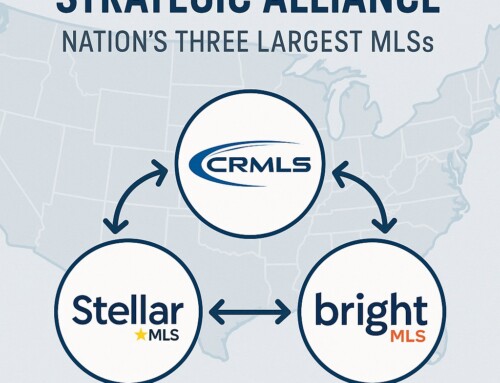 To Syndicate or not to Syndicate, that is NOT the question!
To Syndicate or not to Syndicate, that is NOT the question!
WAV Group Response
What an exciting day in real estate media. 1000Watt Consulting is having a spirited discussion blog to blog with Dale Ross of NAR’s RPR. And, in an exciting development, Zip Realty did a data accuracy study that somewhat mirrored the WAV Group data accuracy research performed for brokers, Redfin, Windermere, and Long and Foster. They concluded that 30% of the listings on Zillow and Trulia are not on the market. To keep things rolling along, my friend Saul Klein from Yardi published a spirited article about Syndication that I would like to address. It would be sad for Saul’s comments to be lost in the discussion about broker data. You may want to bump down lower in this post to read Saul’s thoughts before reading our response – but here goes….
WAV Group has long applauded the efforts made by Point2 to continue developing syndication strategy in our industry. We appreciate the opportunity to add our voice texture to the conversation about the future of syndication and how contract alignment can improve online property marketing for everyone.
As for the question ‘To Syndicate or Not to Syndicate?’ Our consult has always been for MLSs and brokers to develop a plan that works for them in their market, execute the plan effectively, and measure the results to maximize the effectiveness of your strategy. Here are a few strategies
- The broker may extend their strategic syndication choices to agents, which is good for agent recruiting and retention, but fractures the broker online marketing plan.
- Big brokers with significant market share and lots of website traffic have turned off syndication, and had success. This strategy does not work with small to mid-sized brokers unless a whole bunch of competitors do the same thing.
- Brokers have the opportunity enhance listings on some or all publisher channels, and are able to effectively grab more leads per listing than those brokers that do not.
- Some brokers market their company and agents on competitor listings.
When a broker considers syndication, it is important that they have a strategy and do it carefully. DO NOT SYNDICATE TO ANY PUBLISHER WITHOUT AN AGREEMENT THAT PROTECTS YOUR DATA.
There is significant risk to syndicating listing information without agreements that protect the usage of the data. In the absence of a structure to your publisher relationship, publishers have free reign to do whatever they want with the brokers’ data. This puts the broker at risk, as all of the liability for the listing content remains with the broker even when a publisher is displaying it. Moreover, publishers may present the data in ways that undermine the effectiveness of online advertising.
Generally speaking, Point2 and others have begun the process of creating higher standards for listing syndication. They are helping the entire real estate community by putting control in the hands of the broker to manage their syndication preferences, including the power to select where listings go; how many consumers see the listing on each publisher site; eliminating duplicates caused by multiple feed sources; how listings appear in search results and on listing detail pages; competitor advertising on broker listings; links back to the broker website; display of agent and broker branding; limits on listing resyndication to other parties; limits on selling the data and data derivatives; and so on. The industry needs to embrace a contract alignment initiative to protect broker rights, and reduce many of the undesired consequences that have grown and festered.
Today, there are a variety of entities that have sought to structure agreements with publishers. The first to do so were franchise organizations and MLS organizations on behalf of their broker customers. Today, many brokers have direct agreements with publishers, and there are also agreements between technology companies and publishers. Having so many different groups negotiate with publishers has caused a tangled mess, and a nearly infinite number of business rules.
Ideally, the best possible agreement would be between each individual broker and each publisher. The broker, by virtue of their contract with the home seller, owns the data. However, the scope of getting more than 100,000 brokers to structure agreements with a hundred or more publishers is exponentially unpractical. Hence, narrowing the field of contracting entities that are empowered by participating brokers is the most effective course.
Brokers, franchises, and MLSs generally use either Point2 or another company for their listing syndication services. As a result, it is very practical and prudent for the data delivery company to get the publisher to agree to a uniform agreement. I doubt that any uniform agreement is going to nicely align the wishes of all parties, all of the time. Contract alignment represents a framework that can be used as a starting point, similar to the IDX rules and regulations. It is a great initiative that will grow and evolve over time to serve the mutual benefits of all parties. Now – here is Saul’s article published here with his permission.
To Syndicate or not to Syndicate, that is NOT the question!
How many times have you heard the pros and cons of listing syndication in the last five years, and the resulting question…”should you or should you NOT syndicate?” More times than you care to remember, I am sure. Unfortunately, that is not the right question. 2013 is the year to begin to ask the right questions and to advance to the next phase in the distribution of listing data. It is time to move toward control, specific licensing and eventual monetization.
Syndication is distribution. As it is currently deployed in the industry, syndication is the ability to conveniently distribute listing information to a multitude of destinations of choice, having only to enter the listing information once, into one data repository (your MLS). Speed, convenience, choice…who could ask for anything more?
Syndication is an industry evolution, not an industry revolution. The first serious syndicator of listing data was REALTOR.com, which syndicated to AOL, Alta Vista, Lycos (remember Alta Vista and Lycos?) and a few other sites. Realtor.com was “syndicating” listings in the 1990s. No one referred to Realtor.com’s distribution of MLS data as syndication at the time, but today, that is exactly what we would call it.
Today, the concept and the benefits of having the ability to distribute your listing data through a single point of entry should be well understood. The questions for MLSs, associations, brokers and agents to ask now, in 2013, are:
- To what entities should I allow my listings to be distributed?
- What is the real value proposition offered by destination sites? Is the “exposure” promised by the portals all that they claim it to be, or is it more hype, made impressive because it is reported in large, aggregate numbers?
- How and what does each portal do to de-duplicate when it receives the same listing data from multiple sources? What are a portals determining factors in deciding which source is its authoritative source?
- What, if anything, are the portals doing to reduce the chances of non-featured listings, those where the listing agent pays nothing to the web portal, from being found on their sites by interested consumers?
- How are the search results manipulated by the portals?
- Is it in my best interest, the best interest of my customers, and in the best interest of the industry to allow these sites to use my listing data to make commerce for themselves, perhaps at my present and future expense?
- What are some of the unintended consequences of listing data being freely available to destination sites under current terms and conditions of those sites?
- What are the destination sites doing with the data that they should not be doing?
Of course the answers will depend on who you ask. There are many stakeholders in this game, more than just those consumers interested in buying or selling real estate in the next few months. It is an entire eco system, where lots of different players have a lot of different motivations.
Points of significance and topics for further discussion are:
- Diversion of leads away from the listing agent, a practice used by most portals in one way or another.
- What, if any derivative rights and works should be licensed to portals and others, and maybe, at what price?
As the industry wakes up to the value of listing data, and the value of the data created by the consumer while searching for the listing and property data, the discussion of data licensing and potential monetization of listing data will begin to take center stage. The value proposition offered by portal sites must be re-examined and re-evaluated. Why should the destination sites be the only ones to reap the benefits of the hard work of the army of REALTORS who toil in the marketplace every day to obtain the listings?
Listing Rights Management and Data Contract Alignment – It will make a difference.
Point2 Technologies, a division of Yardi, is moving forward with an initiative started at the end of 2012, referred to as Contract Alignment. Point2 is clarifying all aspects of its data contracts with both MLSs and destination sites such as Zillow, Trulia, and the rest. It is the common sense next step in the saga of listing data distribution. The key tool for this program is Point2’s Listing Rights Management Solution which was built and deployed for the Canadian Real Estate Association (CREA) in 2012. Point2’s Listing Rights Management Solution has been adapted for the US, and it will be rolled out in Q2 of 2013. The MLSs establish the terms of use for the distribution of their data.
Contract Alignment is the process of further defining the roles of the participants in the licensing and distribution of MLS listing data.
Contract Alignment defines terms and conditions of use from source to entity receiving data.
Contract Alignment insures the data rights Point2 receives under contract with the MLS, match the data rights received by the portals and vendors that request that data from Point2.
Contract Alignment creates a mechanism for destinations to acquire more rights, with the informed consent of brokers and MLSs, leading to opportunities for data providers to monetize MLS data.
Contract Alignment helps the MLSs and associations (data providers) extract value or compensation for the value the data bring to the destination entities. This is a major objective of Contract Alignment.
As the value of listing data becomes more apparent, the industry will be in a position to participate in the value created by the data, for the benefit of all. That is the purpose of Point2’s Contract Alignment Program.
The horse is on its way back to the barn…and you can take that to the bank.
Saul Klein





Hallelujah!